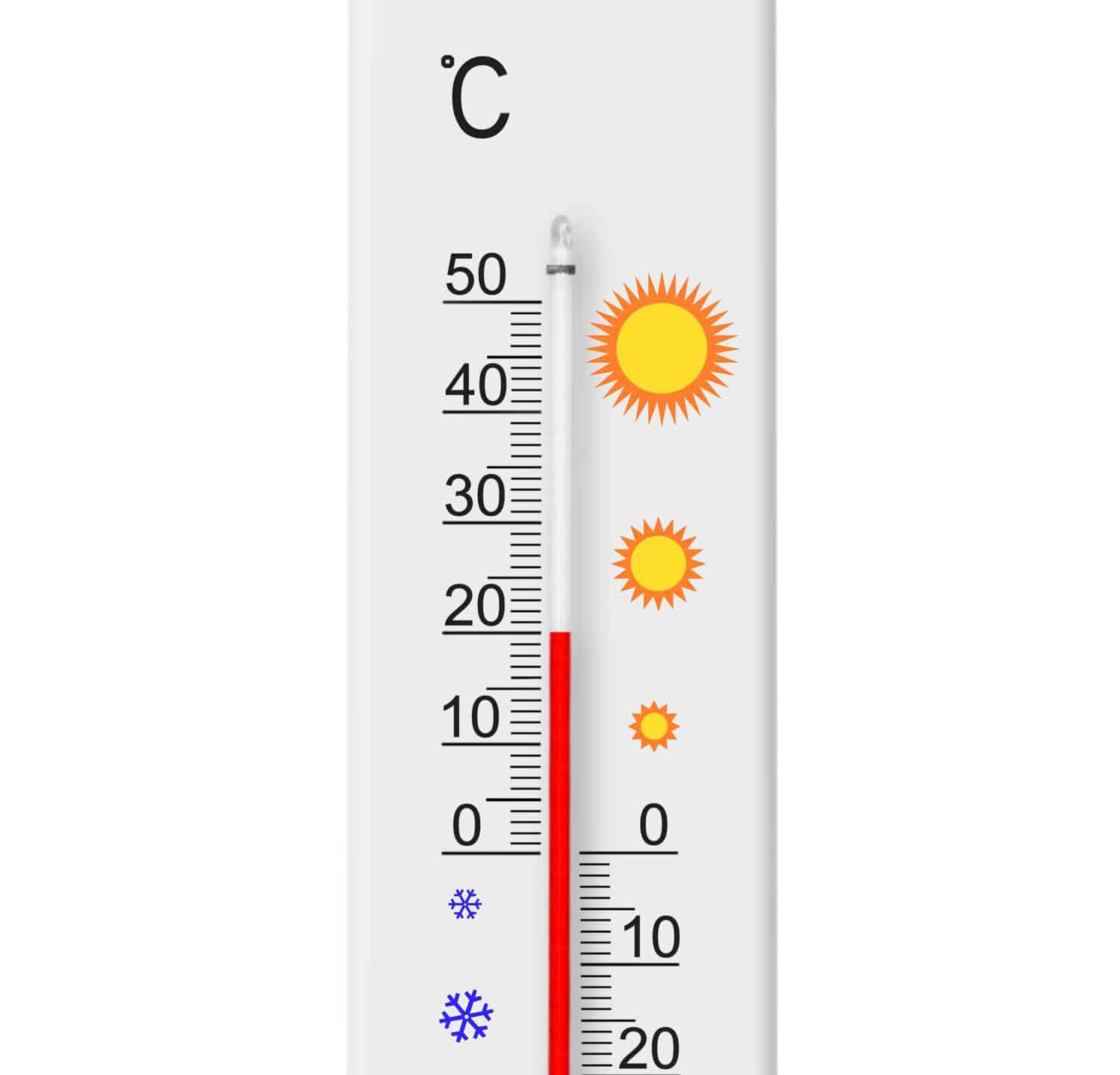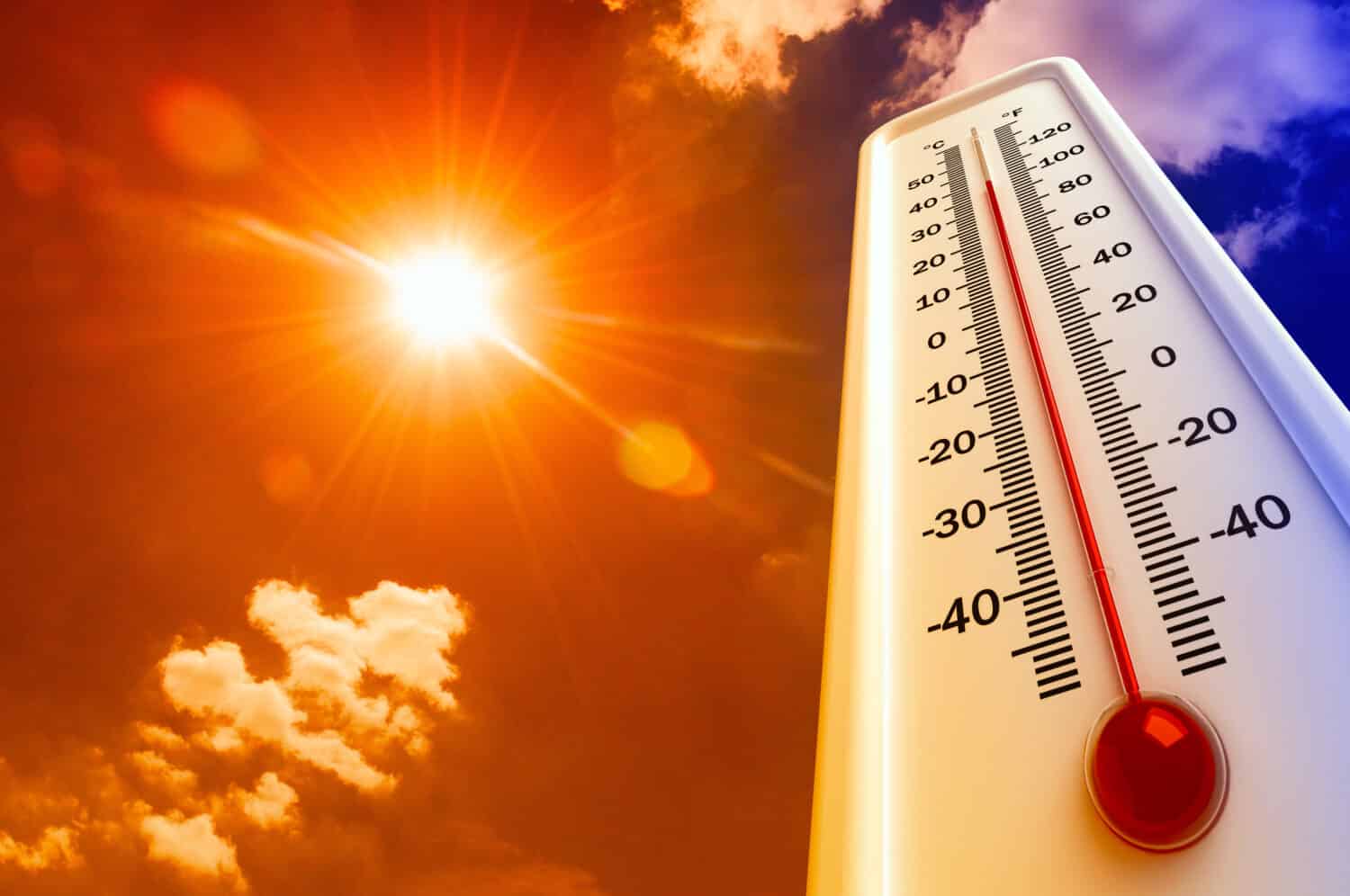When it comes to measuring temperature, most people strongly prefer either Celsius or Fahrenheit. For the most part, preferences depend on which region of the world you reside in. But which system is more accurate? How do you convert one to the other? And how did these systems even come to be? Read on to find out this and more!
Celsius vs Fahrenheit: Which Is More Accurate?

Celsius and Fahrenheit both provide accurate readings.
©BalkansCat/Shutterstock.com
Although Celsius and Fahrenheit are equally accurate in scientific terms, Fahrenheit tends to be more accurate in everyday usage. This is because Fahrenheit uses smaller increments to measure temperature. For example, there are only 100 Celsius degrees between freezing and boiling points (0°C to 100°C) while there are 180 Fahrenheit degrees between these same points (32°F and 212°F). As a result, Fahrenheit is about 60% more likely to express temperatures in whole numbers while a precise Celsius reading more often requires decimal points. Because decimals can be annoying, most people round Celsius temperatures up or down to the nearest integer, reducing its accuracy. It is important to remember that Celsius and Fahrenheit are equally accurate when users employ proper decimal places.
Celsius vs Fahrenheit: How to Convert Them
The conversion from Celsius to Fahrenheit and back again may seem daunting, but it’s actually a fairly simple process whether or not you have a calculator on hand. Below are the methods used to convert °C to °F and vice-versa.
Converting Celsius to Fahrenheit
There are two ways to convert Celsius to Fahrenheit: a quick way that yields an approximate result, and a slightly more difficult way that yields an exact result. To quickly convert Celsius to Fahrenheit, double the Celsius temperature and add 30. This will give you an approximate reading in °F. Here’s an example using 12°C:
- STEP 1 (multiply by 2): 12 x 2 = 24
- STEP 2 (add 30): 24 + 30 = 54
- ANSWER: 12°C = approximately 54°F
To get an exact temperature conversion, multiply the Celsius temperature by 1.8 and add 32. Here’s an example, again using 12°C:
- STEP 1 (multiply by 1.8): 12 x 1.8 = 21.6
- STEP 2 (add 32): 21.6 + 32 = 53.6
- ANSWER: 12°C = precisely 53.6°F
For quick and accurate conversion, see this online Celsius to Fahrenheit calculator.
Converting Fahrenheit to Celsius
Converting Fahrenheit to Celsius is basically the same process, only reversed. To get an approximate reading in Celsius, subtract 30 from the Fahrenheit temperature and then divide the answer by 2. Here’s an example using 100°F:
- STEP 1 (subtract 30): 100 – 30 = 70
- STEP 2 (divide by 2): 70 ÷ 2 = 35
- ANSWER: 100°F = approximately 35°C
To get a more exact answer, subtract 32 from the Fahrenheit temperature and divide the result by 1.8 Here’s an example, again using 100°F:
- STEP 1 (subtract 32): 100 – 32 = 68
- STEP 2 (divide by 1.8): 68 ÷ 1.8 = 37.78
- ANSWER: 100°F = precisely 37.78°C
For quick and accurate conversion, see this online Fahrenheit to Celsius calculator.
Celsius vs Fahrenheit: When and Where to Use Them

The scientific community and most of the world uses Celsius, though the United States favors Fahrenheit.
©Ed Connor/Shutterstock.com
Celsius is the accepted temperature scale for scientists around the world. For nonscientists, the use of Celsius or Fahrenheit will depend a lot on where you are in the world and where you come from. People from the United States and a few other countries are more accustomed to using Fahrenheit. There are also a few places that officially use both systems. As a general rule, the rest of the world uses Celsius.
Here’s a list of the countries and regions that use Fahrenheit:
- American Samoa
- Cayman Islands
- Guam
- Liberia
- Marshall Islands
- Micronesia
- Northern Marianas Islands
- Palau
- Puerto Rico
- United States
- US Virgin Islands
Here’s a list of the countries that use both Fahrenheit and Celsius:
- Anguilla
- Antigua and Barbuda
- Bahamas
- Belize
- Bermuda
- British Virgin Islands
- Monserrat
- Saint Kitts and Nevis
It can be difficult to switch from your preferred system even when you know how to convert one to the other. When traveling, it pays to be aware of the standard system in your destination country so you don’t make a mistake.
Celsius vs Fahrenheit: History
The Celsius and Fahrenheit scales came into being fairly close together in history. Since then, they have become the dominant systems for measuring temperature worldwide.
The History of Fahrenheit

German-Dutch scientist Daniel Gabriel Fahrenheit invented the Fahrenheit scale in 1724.
©Tomas Ragina/Shutterstock.com
German-Dutch physicist Daniel Gabriel Fahrenheit (1686-1736) invented the Fahrenheit scale in 1724, almost two decades before Anders Celsius would develop his own scale. The story of how Fahrenheit came to do this varies. One version says that he wanted to avoid negative numbers (such as in Ole Rømer’s scale) and so fixed the coldest point he could measure at 0°F. He also fixed his body temperature at 100°F. Then he divided the scale into 12 parts, each with eight subdivisions, resulting in a normal body temperature of 96°F. This also fixed the freezing and boiling points of water at 32°F and 212°F respectively.
Another version says he fixed 0°F as the melting point of an equal mixture of ice and salt with 96°F as the temperature of blood. Again, he divided the scale into 12 parts, each with eight subdivisions.
Yet another credible version says he adopted Ole Rømer’s scale with the freezing point of water at 7.5 degrees and multiplied everything by four to eliminate decimals. Then he adjusted the scale so that the freezing point of water was 32°F.
However it happened, the initial measurements were inaccurate, which skewed the freezing and boiling points of water. Other scientists later adjusted the system to produce a consistent freezing point for water of 32°F and a consistent boiling point of 212°F. The Fahrenheit scale falls within the imperial system of measurement.
The United States is notable for its continuing use of the Fahrenheit scale. When Congress passed the 1975 Metric Conversion Act, the United States was close to officially switching to Celsius from Fahrenheit. This would have brought it into accord with the rest of the world. However, it eventually declared the switch optional.
The History of Celsius

Swedish astronomer Anders Celsius invented the Celsius scale in 1742.
©Tomas Ragina/Shutterstock.com
Swedish astronomer Anders Celsius (1701-1744) invented the Celsius scale in 1742. Frustrated by the inaccuracy of the thermometers in use at the time, he developed a new system using mercury thermometers. Its basic reference points would be the freezing and boiling points of water (fixed at 100°C and 0°C respectively). He first described this scale to the Swedish Academy of Sciences in 1742, dying shortly after in 1744. After his death, fellow Swedish scientist Carl Linnaeus switched the fixed points to the form we have today, which uses 0°C as the freezing point of water and 100°C as the boiling point of water.
By 1948, this system had come to be known as the Celsius scale in recognition of its creator’s achievements. It is also known as the centigrade scale because it places 100 degrees between the freezing and boiling points of water (centi means “100”). The Celsius scale is part of the metric system of measurement and is the accepted scientific standard. Much of the world switched to metric from imperial in the 1960s and 1970s.
What About Kelvin?
The Kelvin scale is based on the Celsius scale but uses the lowercase word “kelvin” in place of the word “degrees.” Its zero point is absolute zero, the point at which a thermodynamic system has the least amount of energy. This is equal to -273.15°C and -459.67°F. This scale fixes the freezing point of water at 273.15 and the boiling point of water at 373.15. Generally, this is the most awkward system of measurement for day-to-day use.
Conclusion
Technically speaking, Celsius and Fahrenheit are equally accurate. However, in practice, Fahrenheit tends to be more accurate. This is because a precise Celsius reading more often requires decimals and therefore is more frequently rounded up or down. Keep in mind that Celsius is the most common temperature system in the world and is in use in the majority of worldwide destinations.
Thank you for reading! Have some feedback for us? Contact the AZ Animals editorial team.








